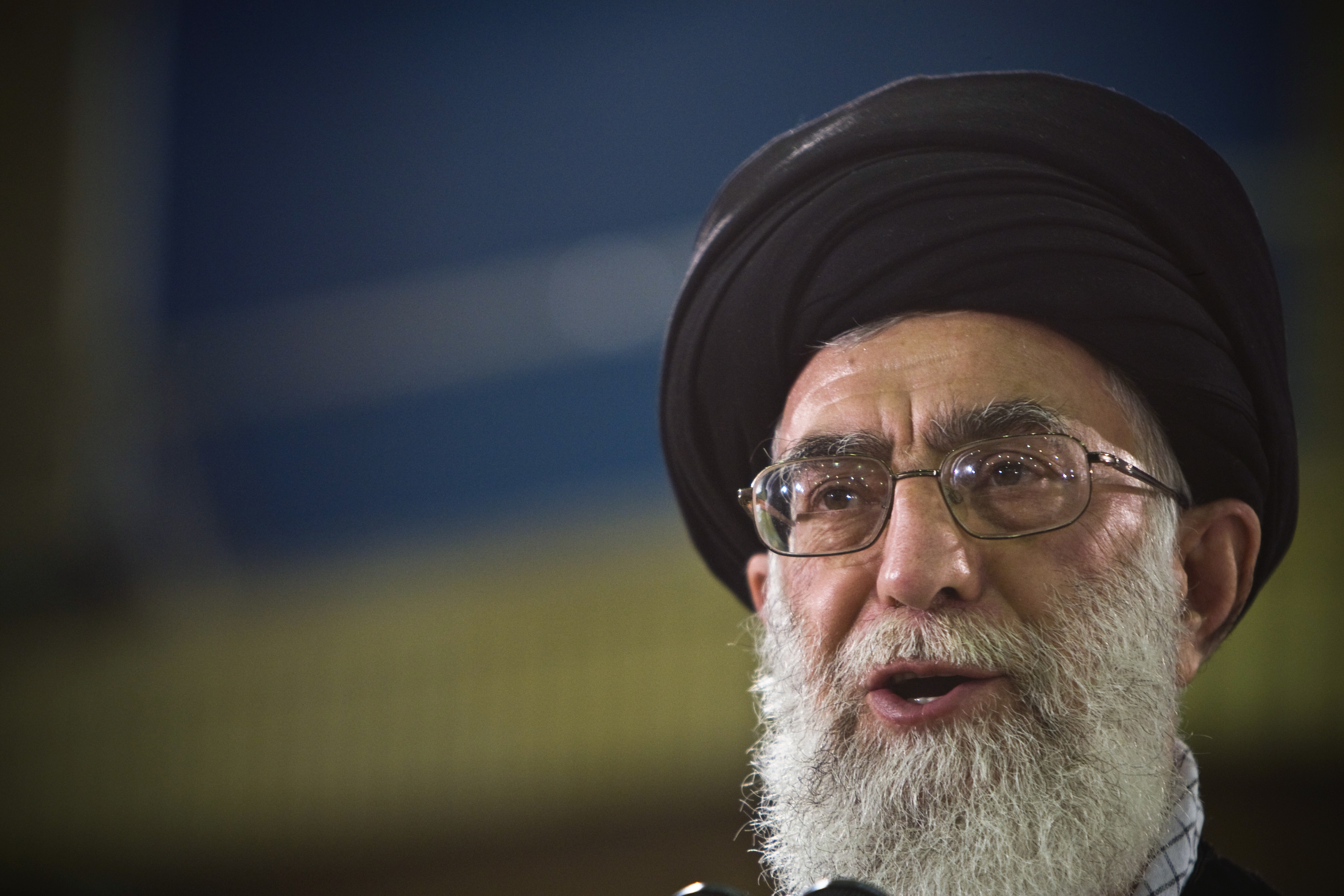Iran’s system of government is not quite a democracy, nor a theocracy. Founding Supreme Leader Ruhollah Khomeini developed its animating doctrine, known as guardianship of the jurist, in the years before the Islamic Republic’s establishment in 1979. Khomeini posited that a just government was possible if religious scholars sat atop it to ensure consistency with Islamic law. This system was put into place with a constitutional referendum after the 1979 Islamic Revolution. The organs of a modern republic—a unicameral legislature (the majlis), executive led by the president, and judiciary—were enveloped by a clerical system. (Most of Iran’s clerical hierarchy, however, remains outside this official structure, based in Qom rather than the capital, Tehran.)
More From Our Experts
Regime hard-liners have further consolidated power across these institutions in recent years. They won control of parliament in each of the last two elections, neither of which was considered free or fair. Recent presidential elections, too, have been stage-managed by the regime, and experts say the June 2024 vote, triggered by the sudden death of President Ebrahim Raisi, will be no different.
More on:
Iran
Ali Khamenei
Authoritarianism
Demonstrations and Protests
Middle East and North Africa
One factor that has remained constant is the ultimate authority of the supreme leader, the guardian jurist who is effectively Iran’s leader for life, per the constitution. Iran’s constitution designates the office as head of state and affords it vast control under the theory that political authority springs from religious authority. Article 110 of Iran’s constitution [PDF] outlines the position’s major powers. They include setting national policies and supervising their implementation, as well as commanding the armed forces and appointing military chiefs and the heads of the Islamic Revolutionary Guard Corps (IRGC) and police. Khomeini’s successor, Ali Khamenei, has reportedly influenced the selection of ministers of defense, intelligence, and foreign affairs, as well as science, a sensitive post charged with appointing the heads of universities. Khamenei served as president and as commander of the IRGC before becoming supreme leader.
The supreme leader’s authority is not absolute, however. He is elected by the Assembly of Experts, a body of eighty-eight directly elected jurists constitutionally mandated with overseeing the supreme leader. In practice, however, they carry out oversight in secret committee, and it is unclear whether they have ever sought to meaningfully check either Khomeini or Khamenei.
More From Our Experts
There are informal constraints on the supreme leader, as well. The position is considered both an arbiter of Iranian politics and a source of emulation, so his direction is meant to both set the course for the republic but also reflect broader consensus among elites. Meanwhile, the supreme leader relies as much on typical instruments of political power [PDF]—control of media outlets, patronage, and so on—as the religious trappings of his office to influence government and society.
Answering to the supreme leader is the president, who serves as head of government. (Neither office is specifically reserved for men, though no woman has ever been permitted to seek these seats by the regime-aligned electoral authority.) Eligible for a maximum of two four-year terms, the president is charged with executing the country’s laws, setting policy within parameters set by the supreme leader, and conducting diplomacy on the state’s behalf. He nominates members of the cabinet, who must be confirmed by the parliament. He also proposes the budget, which must then be passed under the normal legislative process. As with the tightly controlled vote that brought Raisi to power, the June 2024 election will favor conservative regime loyalists, CFR Iran expert Ray Takeyh writes.
More on:
Iran
Ali Khamenei
Authoritarianism
Demonstrations and Protests
Middle East and North Africa
The parliament, or majlis, has 290 seats. Its members are directly elected to four-year terms by geographic district, with five seats set aside for religious minorities. The share of clerics holding seats in it has declined—down from more than 50 percent in 1980 to 5.5 percent in 2020—while the number associated with the Revolutionary Guards has increased. As the unicameral legislature, it has broad lawmaking authority.
The Guardian Council is charged with determining whether the laws parliament passes are permissible under the constitution and Islamic precepts. Half of the council’s twelve members are theologians appointed by the supreme leader; the other half are legal scholars selected by the parliament. The Guardian Council also qualifies candidates for the Assembly of Experts, presidency, and parliament, giving it great influence in setting the parameters of Iranian electoral democracy. In the 2016 general elections, the body approved just half of the declared candidates for parliament and one-fifth of those for the Assembly of Experts. It has often weeded out reformist candidates for office. For example, in each presidential election since 2017, it has disqualified Mahmoud Ahmadinejad, the firebrand ex-president who had clashed with Khamenei while in office.
Another body, the Expediency Council, mediates between the parliament and Guardian Council. It was established by decree in 1988 before being added to the constitution in an amendment the following year. The supreme leader, who appoints the council’s members to five-year terms, has since delegated to it the authority to supervise the government. This body is another avenue through which the supreme leader can choose to exercise closer authority over the government.
The Supreme National Security Council is led by the president and includes the parliamentary speaker and chief justice—that is, the heads of all three branches of government. Also on the council are military chiefs and the ministers of state, foreign affairs, and intelligence, as well as two personal representatives of the supreme leader; thus, it includes appointees of both the president and supreme leader. Its constitutional writ is broad; it is charged with setting a wide range of policies that touch on defense and security, responding to threats both foreign and domestic.

